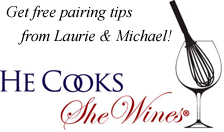The standard breading procedure, used all the time in cooking, is a three-step process of coating foods in a crispy breading before frying them. Breading helps to seal in moisture when deep frying or pan frying.The three-step process also ensures that the breading sticks to the food instead of falling off in the hot oil. While the procedure is typically used for items that will be fried, breaded items can be baked as well.
It is important to season the food before applying any coating.
Use flour to lightly dredge or dust foods before they are dipped in an egg wash.
Make an egg wash by blending eggs (whole, yolks, or whites) and water or milk. A general guideline calls for about 1 oz of milk for every 2 whole eggs. Some items are dipped into milk or buttermilk before they are breaded, rather than in egg wash.
Bread crumbs may be dry or fresh. Fresh white bread crumbs are prepared by grating or processing finely textured bread, such as white Pullman bread with the crust removed. Dry bread crumbs are prepared from slightly stale bread that may be further dried or toasted in a warm oven. Panko (Japanese bread crumbs) has become very popular. These breadcrumbs are coarser than standard bread crumbs and create a crunchy crust when fried. Other ingredients may be used in place of or in addition to bread crumbs. Options include nuts, seeds, shredded coconut, cornflakes, potato flakes, shredded potatoes, grated cheese, ground spices, garlic paste, and chopped herbs.
Blot the food dry with paper towels and season as desired. Hold it in one hand and dip it in flour. Shake off any excess flour and transfer the food to the container of egg wash. Switch hands, pick up the food, and turn it if necessary to coat it on all sides. Transfer it to the container of bread crumbs. Use your dry hand to pack bread crumbs evenly around the food. Shake off any excess, then transfer the food to a rack set over a holding tray. Store breaded food in single layers, but if you must stack the pieces, use parchment to separate the layers.

